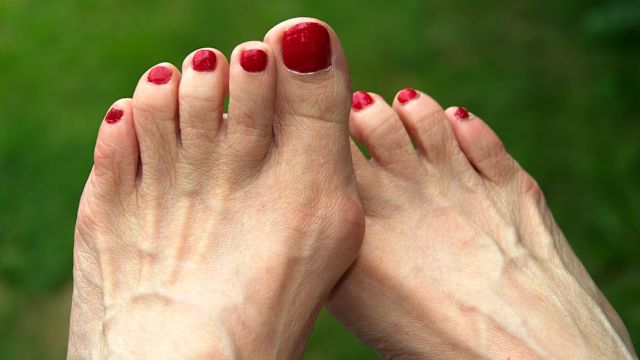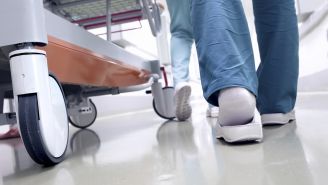Among the many issues that arise with aging are bunions, those annoying, bony bumps that form on the sides of your feet.
If you don’t have one now, you might before too long. Bunions are quite common, particularly as you age. Estimates suggest that as many as one in four adults up to age 65—and more than one in three older than 65—have them. They’re also more common among women than men.
The good news is that bunions are often not much more than a nuisance and can be managed without surgery. In some cases, though, they can lead to more severe problems that require aggressive care.
Here’s everything you always wanted to know about bunions (but were afraid to ask).
Bunions defined
A bunion (or “hallux valgus,” in the more exotic-sounding scientific terminology) is a bony deformity or bump that develops on the side of the foot at the base of the big toe. If a smaller bump forms at the joint of the small toe, it’s known by the slightly cuter term bunionette.
Bunions form when the big toe pushes against the toe next to it, causing the joint of the big toe to be forced outward over time, away from the other toes.
Because our toe joints carry so much of our bodies’ weight every day—whether we’re standing, walking or running—bunions can be very painful. They might hurt all the time or more intermittently, particularly after hours of activity that puts pressure on them.
In addition to pain, bunions can cause:
- Stiffness, redness, and swelling
- Calluses, either where the big toe and the one next to it rub together, or on the ball of the foot
- Restricted movement of the toe (particularly if you have arthritis in the toe)
Bunions are more common in adulthood because they develop and worsen over time, but they can occur in children, too, particularly among girls between the ages of 10 and 15.
What puts you at risk for bunions and bunionettes?
Research hasn’t provided conclusive evidence as to why some people develop bunions and others don’t, but there are several factors that can increase your risk. These include:
The structure of your foot: Blame your parents for this one: bunions run in the family. Some people inherit foot shapes and mechanics—such as loose joints and connective tissue, flat feet, and low arches—that can increase their risk of bunions. Folks with especially tight calf muscles tend to be at higher risk, too.
Certain diseases, chronic conditions, and injuries: Inflammatory chronic diseases that affect the joints, like rheumatoid arthritis and osteoarthritis, can increase the risk for bunions, as can neuromuscular disorders like polio or muscular dystrophy that involve problems with the way nerves control your muscles. Foot injuries can increase risk, too.
Pregnancy: Hormonal changes associated with pregnancy can loosen ligaments and flatten the feet, upping the risk of bunions.
Your occupation: Having a job that requires you to be on your feet all day or that puts extra stress on your feet—such as being a teacher, nurse, or ballet dancer—can also make you more prone to developing a bunion.
Footwear: Research has all but reversed the thinking that the kind of shoes you wear causes bunions to form, absent other risk factors. But experts still say that shoe choices can speed up the development or worsening of a bunion. Footwear that is implicated includes high heels (because they place extra pressure on the toes) and shoes with narrow or pointed toe boxes.
It’s important to know that these factors work cumulatively to boost your risk. In other words, just because you’re on your feet all day for your job doesn’t necessarily mean you will get a bunion. But if you also have flat feet, wear tight footwear, and have arthritis in the feet, you’re more likely to enter bunion territory.
There are also some cases of bunions that children are born with, known as congenital hallux valgus. Other types, called juvenile or adolescent hallux valgus, develop during childhood. Evidence suggests that these types of bunions involve a genetic predisposition.
When do bunions become a problem?
If your bunion is more of a cosmetic nuisance and doesn’t cause you discomfort or disability, you can usually get by without treatment. But it’s important to keep an eye on the condition—particularly when it causes foot pain or limits your day-to-day activity—because untreated bunions tend to get worse.
Over time, bunions can damage your feet, causing hammertoes, a condition in which other toes become bent. Bunions can also lead to corns, ingrown toenails, or calluses on the bottom of the feet.
These problems can accumulate, making walking, exercise, and routine activities difficult. If complications become severe enough, they may cause disability and increase sedentary behavior in older adults. This not only decreases quality of life, but also increases risks for problems like heart disease, type 2 diabetes, and obesity.
Untreated bunions can also cause other foot complications, like bursitis (inflammation in the small fluid-filled pads that cushion the bones and tissues near the joints) and metatarsalgia (pain and inflammation in the balls of the feet).
What you can do to find relief
If you start to notice a bunion forming, there are steps you can take to make walking and standing more comfortable. You can wear shoes with a wider toe box, add cushioning to your shoes to pad the protruding area or place a spacer between the big and second toes.
If pain persists or limits mobility, loop in your healthcare provider (HCP). Your HCP can recommend additional methods to manage the condition, such as:
- Wearing orthotics to help control foot function
- Wearing a splint at night to improve toe alignment
- Applying ice to reduce inflammation
- Attending physical therapy to stretch and strengthen specific muscles of the foot, which may include ultrasound therapy
- Taking over-the-counter anti-inflammatory medications (like acetaminophen or ibuprofen) or receiving anti-inflammatory or cortisone injections
In severe cases—and if all else fails to reduce pain or improve mobility—your HCP may refer you for foot surgery.






